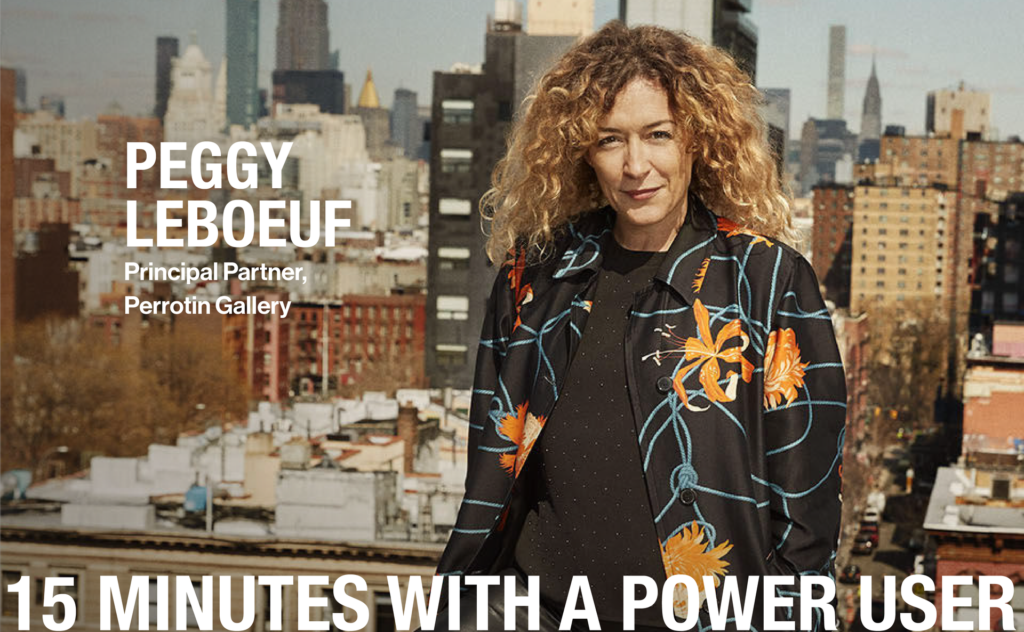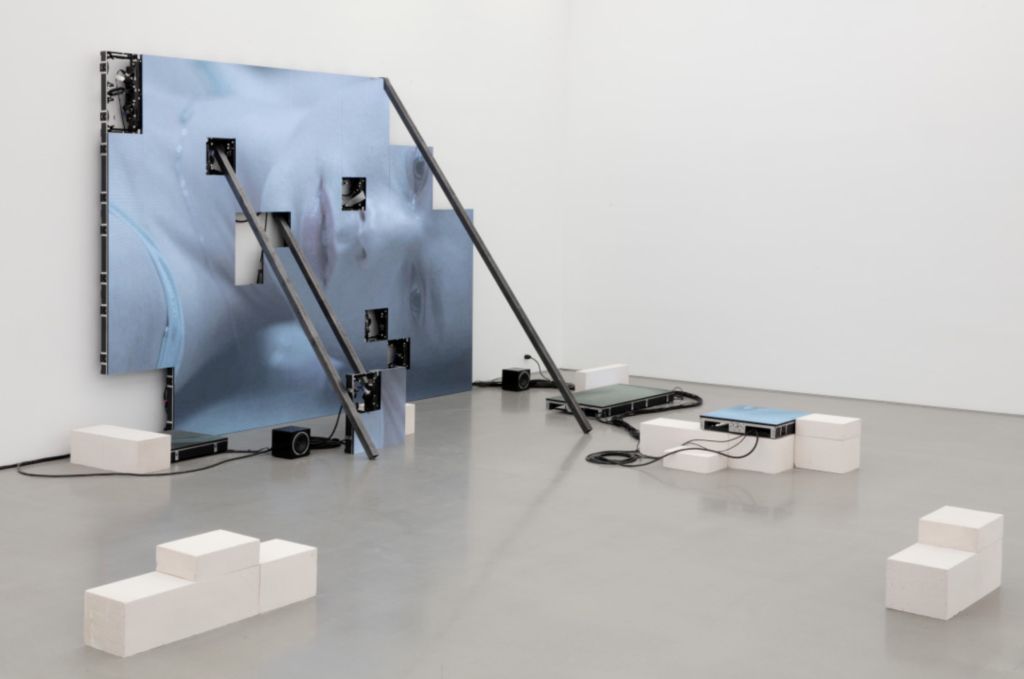15 Minutes with a Price Database Power User: Peggy Leboeuf


Artnet Price Database Team

Art world insiders trust one tool to buy, sell, and research art: the Artnet Price Database. These users cross industries—from auction houses and galleries, to museums and government institutions—and represent the art world’s most important players. We’re taking 15 minutes to chat with some of the Artnet Price Database’s power users to get their take on the current state of the market and how they’re keeping up with the latest trends.
Perrotin is a true gallery empire with six distinct locations spread across three continents. Founded in 1990 in Paris by Emmanuel Perrotin when he was just 21, the gallery has been at the center of the contemporary art boom. Peggy Leboeuf first joined the team in 1996 as an intern, and today she serves as the cutting-edge gallery’s Partner and Executive Director based out of New York.
With a keen eye and savvy market strategy, Peggy has played a critical role in shaping Perrotin’s enviable artist roster and ambitious curatorial program. She’s brought passion and dedication to her work, as evidenced in her 2016 venture with co-curator Anissa Touati: Together they took a two-year tour of Mexico’s emerging art scene, returning to mount a gorgeous, sprawling group show at Perrotin’s Paris location featuring 16 of Mexico’s most exciting young artists. Peggy has also been a cool presence during the gallery’s biggest media moments, as when Maurizio Cattelan’s banana made headlines ‘round the world, ensuring the artist’s central message didn’t get drowned out in the ensuing media firestorm.
We had a chance to catch up with the busy gallerist to learn more about her career so far and what she’s looking forward to next.
You started with Perrotin in Paris, and moved to New York relatively recently, in 2013. What made you decide to hop across the pond and spearhead Perrotin’s operations in New York?
I have been working with Emmanuel since 1996, and it has been an incredibly formative experience. I still remember when I first began as an intern—it was just the two of us, working away in an apartment off Rue Beaubourg. We had to take so many chances in the very beginning. When Emmanuel asked me if I would consider overseeing projects in New York, I did not think twice. I knew that I needed to continue challenging myself.
Originally, I came to Perrotin in Paris for a Mariko Mori exhibition and now, nearly 20 years later, I am still in New York!
I need to feel a connection to the work—it has to make me dream. And not only does it have to make me dream, it has to make others dream as well.
What makes the New York gallery scene unique? Is the gallery’s planning process different when it comes to putting together shows in each city?
This city is, without question, a critical incubator of art and new ideas. However, in the end, a good exhibition is a good exhibition, and it does not matter where it is presented. In New York, we are exceptionally fortunate in terms of our space. It has remarkable architectural features that allow our artists to execute breathtaking work, including double-height ceilings, three expansive floors, and a flexible space for black box presentations.
We very recently presented an outstanding exhibition by Danish artist Jesper Just that I truly believe could not have happened anywhere but in New York. We were so lucky that Just was willing to do a site-specific video piece for us and shoot everything in the gallery, thus creating this sublime and uncanny doubling of the space.
Next up is New Delhi-based artist Bharti Kher; I am always so enchanted by her work and I believe that New York will be as well.
What do you look for when bringing a potential new artist to the Perrotin roster?
I cannot say that I have one single rule. First of all, I need to feel a connection to the work—it has to make me dream. And not only does it have to make me dream, it has to make others dream as well. Moreover, I always think about whether or not I can see myself growing with an artist.
And also, what do we have to offer one another? I have had the pleasure of working with some of my artists for nearly 20 years and, as with any relationship, an enduring foundation of trust and respect is crucial if you are to produce meaningful work that can withstand the tumultuous winds of our contemporary world. Again, it is like any relationship where we need to meet people who bring something new into our lives and who might want to receive what we have to offer. In this way, we can rise together.

View of the exhibition “Corporealités” at Perrotin New York, 2020.
As you’ve built out the gallery’s U.S. team, what have you learned is important when hiring?
There’s no secret to hiring. However, trust is critical. And then, even more importantly, is empowering those who you trust to take on new challenges. It is impossible to be everything to everyone, and it is always a good idea to hire those whose strengths might be your weaknesses. If everyone in the room agrees with you, then you might be in the wrong room.
The biggest lesson that I want to impart is kindness, and a community that revolves around kindness as a guiding principle. I can’t tell you how much it means to work with people who treat the visitors as well as their own co-workers with the same respect and love that they would our artists or even myself and Emmanuel. Nothing would be possible without them, and we never forget that. We have a fantastic team!
What have been the biggest changes you have noticed in the New York art world over the past five years?
The ascent of the digital has challenged the very foundations of the art world, however that is not unique to New York. And it is not even that the digital has eclipsed the physical, but simply that everything has become faster. We are moving at the speed of light. In a way, it has provided unprecedented transparency in the art world, and in many ways, it is fantastic to see the market challenged in this way.
However, we must not forget that the physical—seeing artwork and being in the presence of magic—is why we are all here in the first place. That will never change.
What was the last thing you searched for in the Price Database?
A pair of Maison Margiela shoes.
The Price Database is the art market research tool trusted by appraisers and aspiring collectors alike. To learn more and to choose from our range of subscription options, click here.